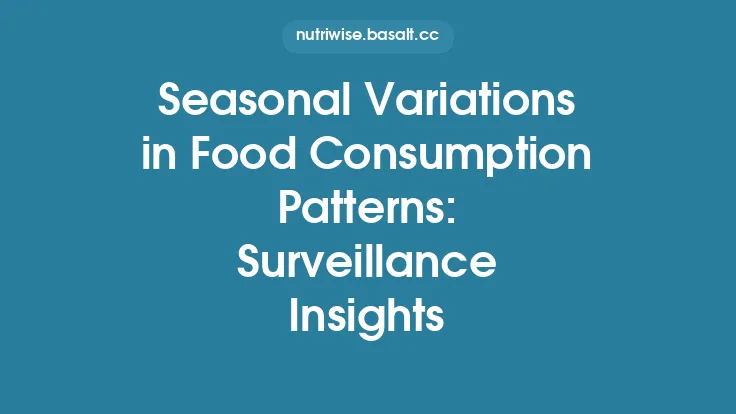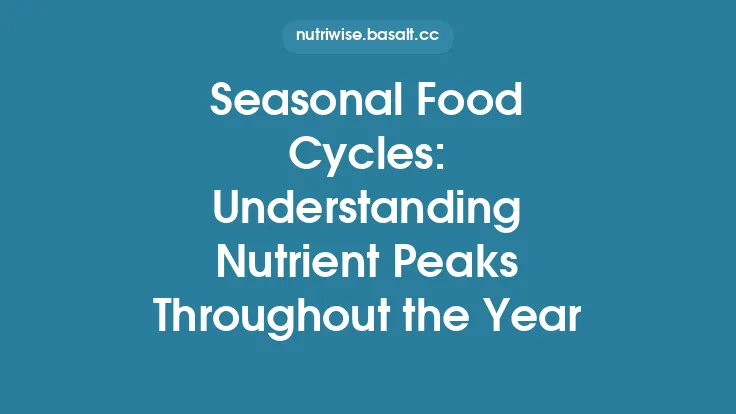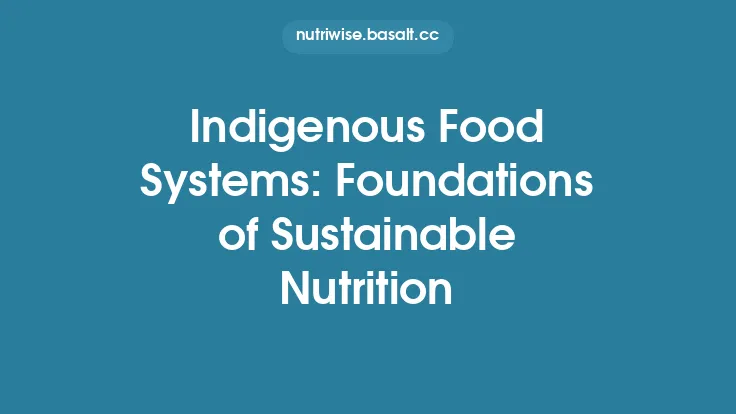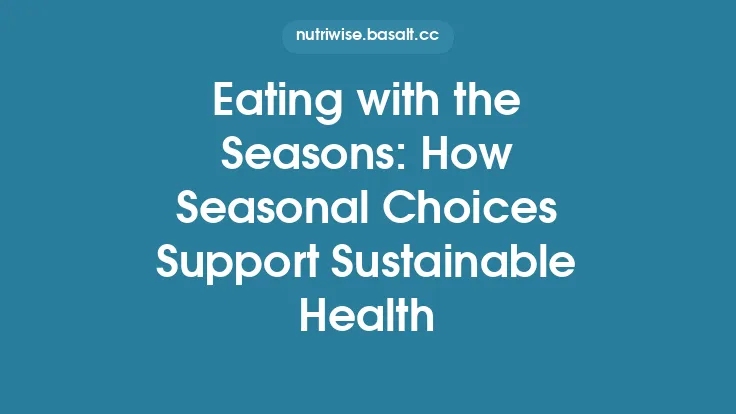Seasonal food calendars are visual or tabular tools that map the typical harvest periods of fruits, vegetables, grains, legumes, nuts, and animal products across different regions of the world. By aligning culinary practices, procurement strategies, and consumer expectations with the natural rhythms of agriculture, these calendars help create a more resilient and transparent food system. While the concept is simple—showing when a given crop is “in season”—the execution varies dramatically depending on climate zones, cultural traditions, and the structure of local food networks. Below is a comprehensive look at how seasonal food calendars are built, interpreted, and applied on a global scale.
1. Climate Zones and Their Influence on Harvest Windows
The primary driver of any seasonal calendar is climate. Broad climatic classifications—tropical, subtropical, temperate, Mediterranean, continental, and polar—determine the length of growing seasons, the number of frost-free days, and the timing of rainfall or irrigation.
| Climate Zone | Typical Growing Season Length | Key Crops (Examples) | Calendar Characteristics |
|---|---|---|---|
| Tropical (e.g., Brazil, Thailand) | Year‑round, with two distinct wet/dry periods | Bananas, mangoes, cassava, rice, papaya | Overlapping harvests; “off‑season” is defined more by rainfall intensity than temperature |
| Subtropical (e.g., Southern US, parts of Australia) | 6–9 months, often split into spring‑summer and fall‑winter cycles | Citrus, avocados, tomatoes, wheat, almonds | Two primary windows; some crops (e.g., citrus) have extended periods due to mild winters |
| Temperate (e.g., Europe, northern US) | 4–6 months, limited by frost dates | Apples, carrots, barley, potatoes, berries | Clear spring‑summer harvests; winter is dominated by storage crops and greenhouse production |
| Mediterranean (e.g., Italy, California) | Mild, wet winters and hot, dry summers | Olives, grapes, figs, artichokes, legumes | Winter‑spring for leafy greens; summer for stone fruits and nuts |
| Continental (e.g., Central Asia, interior Canada) | Short, intense summer; long, harsh winter | Wheat, rye, root vegetables, hardy berries | Narrow harvest window; heavy reliance on grain storage and root cellars |
| Polar/High‑Altitude (e.g., Iceland, Andes) | Very short summer (2–3 months) | Barley, potatoes, berries, reindeer | Emphasis on rapid‑maturing varieties and preservation techniques |
Understanding these macro‑climatic patterns is the first step in interpreting any seasonal calendar. The same crop may appear in multiple windows across zones—e.g., tomatoes are a summer staple in temperate Europe but can be harvested year‑round in tropical Kenya due to continuous warmth.
2. Cultural and Agricultural Calendars: More Than Just Harvest Dates
Many societies have long‑standing agricultural calendars that intertwine planting, harvesting, and cultural festivals. These calendars provide context that pure agronomic data often miss.
- East Asian Lunar Calendar – In China, Japan, and Korea, the “24 Solar Terms” (e.g., *Jingzhe – awakening of insects, Lixia* – start of summer) historically guided sowing and harvesting. Modern seasonal calendars for these regions still reference these terms to indicate optimal planting times for rice, soybeans, and bok choy.
- Indian Panchang – The Hindu lunisolar calendar marks festivals such as *Makar Sankranti* (sun’s transition into Capricorn) which coincides with the harvest of millets and wheat in many northern states. Seasonal calendars for India often align produce availability with these festivals, helping consumers anticipate market offerings.
- Mediterranean Feast Days – In Greece and southern Italy, saints’ days and harvest festivals (e.g., *Feast of St. John* for figs) are embedded in local food calendars, signaling peak availability of specific fruits and nuts.
When constructing a global perspective, it is essential to overlay these cultural markers onto agronomic data. Doing so yields calendars that are not only scientifically accurate but also socially resonant.
3. Data Sources and Methodologies for Building Accurate Calendars
Creating a reliable seasonal food calendar requires a blend of satellite observations, meteorological records, farm surveys, and market data. The most common workflow includes:
- Remote Sensing – Satellite platforms (e.g., Sentinel‑2, Landsat) provide NDVI (Normalized Difference Vegetation Index) time series that pinpoint greening and senescence phases for major crops.
- Phenological Models – Using temperature, day length, and precipitation inputs, models such as the CROPGRO suite predict flowering, fruit set, and maturity dates for specific cultivars.
- Farm‑Level Reporting – National agricultural censuses and farmer cooperatives submit planting and harvest dates, which are then aggregated to regional averages.
- Market Flow Data – Wholesale price indices and import/export logs reveal when a commodity appears in local markets, offering a pragmatic “availability” signal that may differ from field harvest dates due to storage or transport lag.
By triangulating these sources, calendar developers can assign confidence intervals to each entry (e.g., “June – August ± 2 weeks for sweet corn in the Mid‑Atlantic United States”). This transparency is crucial for downstream users such as food service operators, procurement officers, and policy planners.
4. Regional Case Studies
4.1. The Andean Highlands (Peru, Bolivia, Ecuador)
- Climate: High‑altitude tropical, with a pronounced dry season (May–October).
- Key Crops: Quinoa, amaranth, potatoes, oca, native beans.
- Calendar Nuance: Because temperature fluctuations are modest, many tubers can be harvested over a six‑month window, but quinoa peaks during the dry season when seed heads mature rapidly. Traditional “mita” labor rotations still influence planting cycles, and seasonal calendars often reflect communal harvest festivals (e.g., *Inti Raymi*).
4.2. The Sahel Belt (Mali, Niger, Burkina Faso)
- Climate: Semi‑arid, short rainy season (June–September).
- Key Crops: Sorghum, millet, cowpea, fonio, shea nuts.
- Calendar Nuance: Harvest windows are extremely tight; a two‑week delay can jeopardize grain quality. Seasonal calendars for the Sahel incorporate “early‑maturing” and “late‑maturing” varieties, providing decision support for seed selection under variable rainfall.
4.3. The Pacific Northwest (Washington, Oregon, British Columbia)
- Climate: Temperate maritime, mild, wet winters and dry summers.
- Key Crops: Apples, cherries, hazelnuts, wine grapes, kale.
- Calendar Nuance: The region’s “cool‑summer” climate extends the ripening period for stone fruits, allowing staggered harvests from late July through October. Seasonal calendars here often integrate “cold‑storage release dates” for apples, which are harvested in late summer but marketed through winter.
These case studies illustrate how a single global framework must be flexible enough to capture micro‑regional idiosyncrasies.
5. Applications Beyond the Consumer Kitchen
While many think of seasonal calendars as a guide for home cooks, their utility extends to several professional domains:
- Food Service Procurement – Large institutions (schools, hospitals, corporate cafeterias) use calendars to align menu cycles with bulk purchasing contracts, reducing reliance on out‑of‑season imports.
- Supply Chain Planning – Distributors and logistics firms map calendar data onto transportation schedules, optimizing refrigerated truck loads for perishable items that have narrow harvest windows.
- Policy & Food Security – Governments incorporate seasonal calendars into strategic grain reserve planning, ensuring that storage releases coincide with post‑harvest periods when domestic production dips.
- Research & Extension – Agronomists use calendar trends to identify gaps in crop diversity, prompting breeding programs for “off‑season” varieties that can fill market voids without resorting to intensive greenhouse production.
By providing a common temporal language, seasonal food calendars facilitate coordination across the entire food ecosystem.
6. Digital Platforms and Open Data Initiatives
The rise of web‑based and mobile applications has democratized access to seasonal information. Notable trends include:
- Interactive Mapping – Platforms like *FoodMap* overlay harvest windows on GIS layers, allowing users to zoom from global to farm‑level detail.
- API Integration – Open‑source APIs (e.g., the FAO’s *Crop Calendar Service*) enable developers to embed real‑time seasonal data into inventory management systems.
- Community‑Sourced Updates – Crowdsourced platforms let farmers report actual harvest dates, refining model predictions and accounting for year‑to‑year climate variability.
- Standardized Data Formats – Initiatives such as the *Global Agricultural Data Alliance* promote the use of JSON‑LD schemas for seasonal data, ensuring interoperability across platforms and languages.
These technological advances help keep calendars current, especially in the face of shifting climate patterns.
7. Climate Change and the Dynamic Nature of Seasonal Calendars
Global warming is reshaping traditional harvest calendars in several measurable ways:
- Phenological Shifts – Warmer spring temperatures cause earlier flowering and fruit set, advancing harvest dates by weeks in many temperate zones.
- Extended Growing Seasons – In higher latitudes, longer frost‑free periods enable the introduction of new crops (e.g., olives in southern England).
- Increased Variability – Erratic rainfall and heatwaves lead to “failed” windows, prompting the need for contingency planning within calendars.
To remain relevant, seasonal calendars must incorporate climate projection data. Some forward‑looking models now generate “scenario calendars” that show probable harvest windows under 1.5 °C, 2 °C, and 3 °C warming pathways, allowing stakeholders to anticipate and adapt to future conditions.
8. Building a Personal or Institutional Seasonal Calendar
Even without sophisticated data pipelines, anyone can construct a functional calendar by following these steps:
- Define Geographic Scope – Choose the region(s) you wish to cover (e.g., a city, state, or country).
- Gather Baseline Data – Use national agricultural statistics, local extension services, or reputable online calendars as a starting point.
- Validate with Market Observations – Visit farmers’ markets, grocery aisles, or wholesale terminals to confirm when items appear.
- Add Cultural Markers – Incorporate local festivals, holidays, or traditional planting ceremonies that influence availability.
- Create a Visual Layout – Use a spreadsheet, calendar app, or graphic design tool to map crops onto months or weeks.
- Update Annually – Record any deviations (e.g., early strawberries) and adjust the next year’s version accordingly.
Institutions can scale this process by assigning a data steward, integrating API feeds, and establishing a review cycle aligned with the agricultural year.
9. Future Directions: Towards a Truly Global, Integrated Calendar
The next generation of seasonal food calendars will likely feature:
- Real‑Time Phenology Sensors – Networks of ground‑based phenocams that stream leaf‑out and fruit‑ripening data directly to dashboards.
- Blockchain‑Backed Traceability – Linking harvest timestamps to product batches, enabling end‑users to verify that a “seasonal” label reflects actual field timing.
- AI‑Driven Forecasting – Machine‑learning models that ingest weather forecasts, soil moisture data, and historical yields to predict short‑term availability with high granularity.
- Cross‑Sector Harmonization – Aligning food calendars with parallel systems in forestry, fisheries, and horticulture to support broader ecosystem‑based management.
These innovations promise to make seasonal calendars not just a static reference but a dynamic decision‑support tool that bridges producers, distributors, policymakers, and consumers worldwide.
10. Key Takeaways
- Seasonal food calendars are built on the intersection of climate zones, cultural practices, and agricultural data.
- Regional variations—tropical, temperate, Mediterranean, etc.—produce distinct harvest windows that must be respected when planning food sourcing.
- Reliable calendars combine remote sensing, phenological modeling, farmer reports, and market flow data, each contributing a layer of confidence.
- Applications extend far beyond home cooking, influencing procurement, logistics, policy, and research.
- Digital platforms and open‑data standards are democratizing access, while climate change demands that calendars become adaptable and forward‑looking.
- Whether for a household, a restaurant chain, or a national food‑security program, constructing a seasonal calendar follows a systematic process of data collection, validation, visualization, and continual updating.
By grounding food choices and supply‑chain decisions in these globally informed calendars, societies can better align consumption with the natural rhythms of the planet, fostering a more resilient and transparent food system.





